Historical Village of Abyaneh
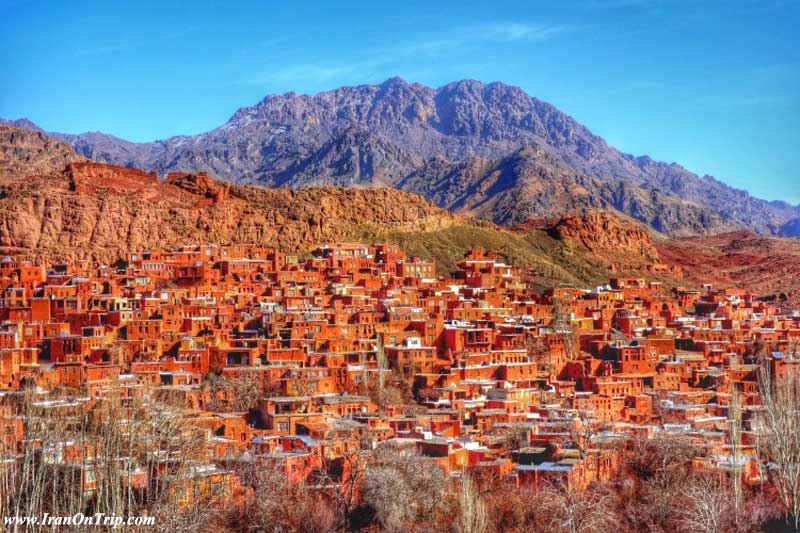
Abyaneh Village
Abyaneh, a remarkable village in the Barz-rud subdistrict (dehestan) in Natanz Sahrestan, 38 km northeast of Naṭanz (Razmara, Farhang III, p. 3), and 18 km from the asphalt road connecting Naṭanz to Kasan (Farhang-e abadha-ye kesvar VII, Tehran, 1969, p. 46). An upland village of about 2,000 population (2,181 according to the 1966 census, ibid.), Abyana sits at the top of the fairly long (about 25 km) and verdant valley of Barz-rūd, which runs westward from the Hanjan bridge past the villages of Yarand, Komjan, Barz, and Tara. A road leading from Abyana toward the southwest forks after some 16 km at Moravand, one branch reaching Meyma, the other Murcakort in the Isfahan direction. Abyāna’s houses, built mostly on slanting slopes and generally consisting of three or four stories with balconies and latticed wooden windows, impart an attractive aspect to the village, which is dominated by an ochre color.
.jpg)
The produce of Abyana is chiefly fruit (apples and plums in particular), wheat, potatoes, and lucerne (alfalfa). Village trees include the plane, ash, poplar, and willow. Animal husbandry—chiefly goats, but also sheep and cattle—is one of the mainstays of the village economy. To a limited extent women weave rugs and make woven cotton shoes (giva). The level of literacy in the village is high, special attention being paid to the education of girls. Communal cohesion is considerable. Until the early 1960s, when the land reform was put through, the earnings from renting katira (gum tragacanth) shrubs were devoted to communal development.
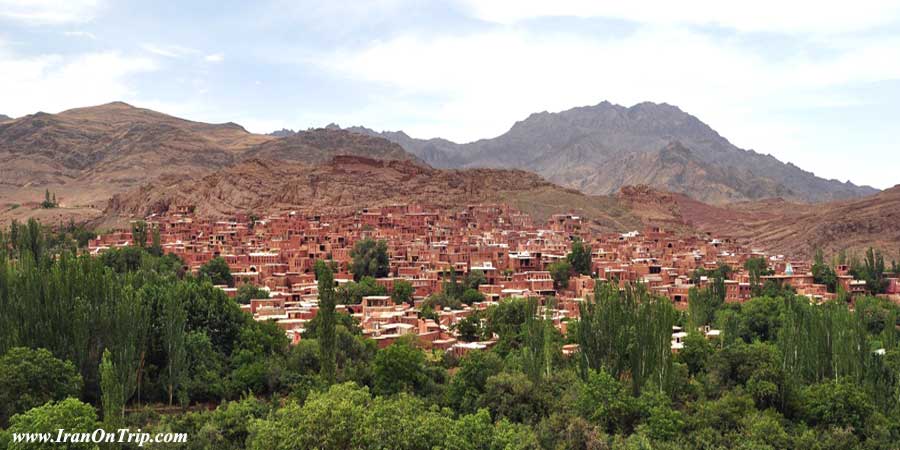
Abyaneh is a famous historic Iranian village near the city of Kashan in Isfahan Province. Being a village of great antiquity, Abyaneh islike a living architectural and anthropological museum. It affords an impressive exponent of adaptation of man with his environment.With a unique reddish hue, the village is one of the oldest in Iran, attracting numerous native and foreign tourists year-round, especially during traditional feasts and ceremonies. Considering the evidence found in Abyaneh, it dates back to antiquity, but its golden age was during the Safavid period. The word Abyaneh has been derived from the word "viona" meaning willow grove. (In the local dialect "vey" means willow.)
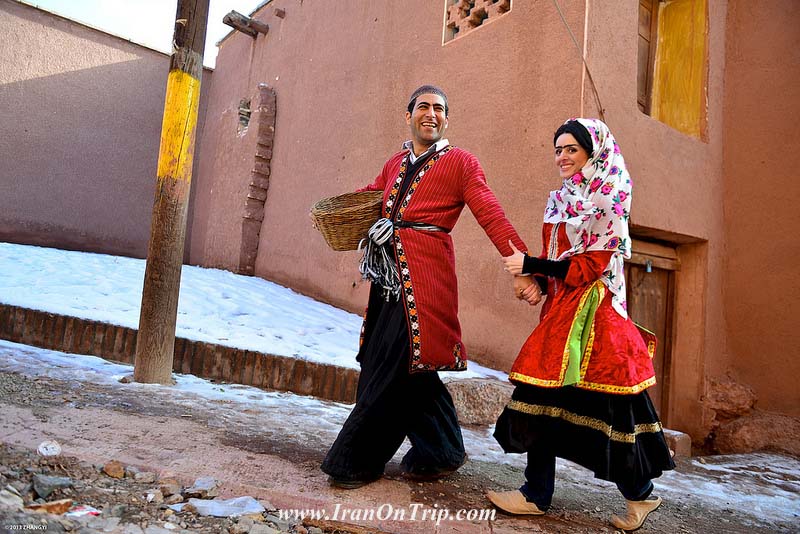
The village is expanded along the river, and its configuration indicates that in the past the people showed much consideration for security. Although the village itself is situated on high ground, there are three castles that protected the people when the enemy attacked. Furthermore, the configuration of Abyaneh protects it from strong winds and floods.

This is a village of living traditions, architectural styles (all in red clay), and probably the most interesting example of human adaptation to nature, wherein one can transcend the boundaries of time and space and experience the ancient civilization and culture of Iran.
The village is compact, with narrow and sloped lanes, and houses located on the slope as if placed on a stairway. Here, the roofs of some houses are used to serve as the courtyard for other houses higher up on the slope.
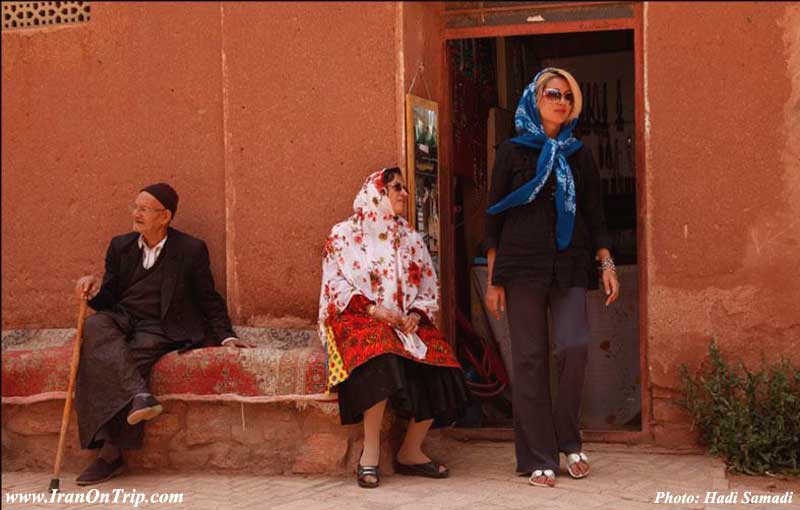
The language spoken by the literate people of Abyaneh is Parthian Pahlavi. They are deeply committed to honoring their traditions. No matter how well educated a person from Abyaneh might be, he or she puts on the traditional Abyaneh costume on coming back to the village from anywhere in Iran. The women's traditional costume consisting of a scarf with floral motifs and pleated pants is particularly attractive.
The Abyaneh woman is inseparably attached to her wedding gown inherited from her mother, and is expected to pass it on to her daughter. It bears such an intrinsic value of her that she wouldn't sell it at any price.
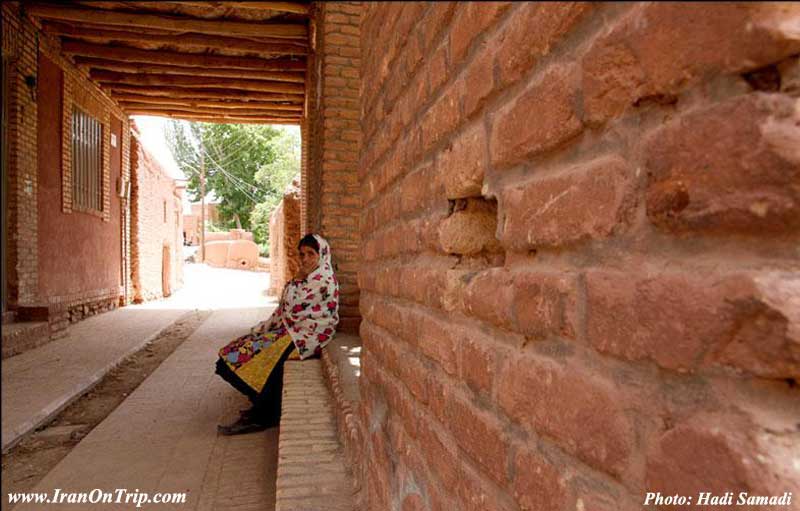
Abyaneh has a compact fabrication with narrow and steep alleys. Set on the slope of the mountain, the houses are arranged in a stair-step shape, so that the mountain, the houses are the yards of the others.
The materials used for building the roofs are timbers, straw and clay. The materials use for building the roofs are timbers, straw and clay. The walls, built by red mud bricks are impressive. The mud bricks are of quality that become harder when they are exposed to the rain. To use the sun as much as possible, the houses face the east.
 |
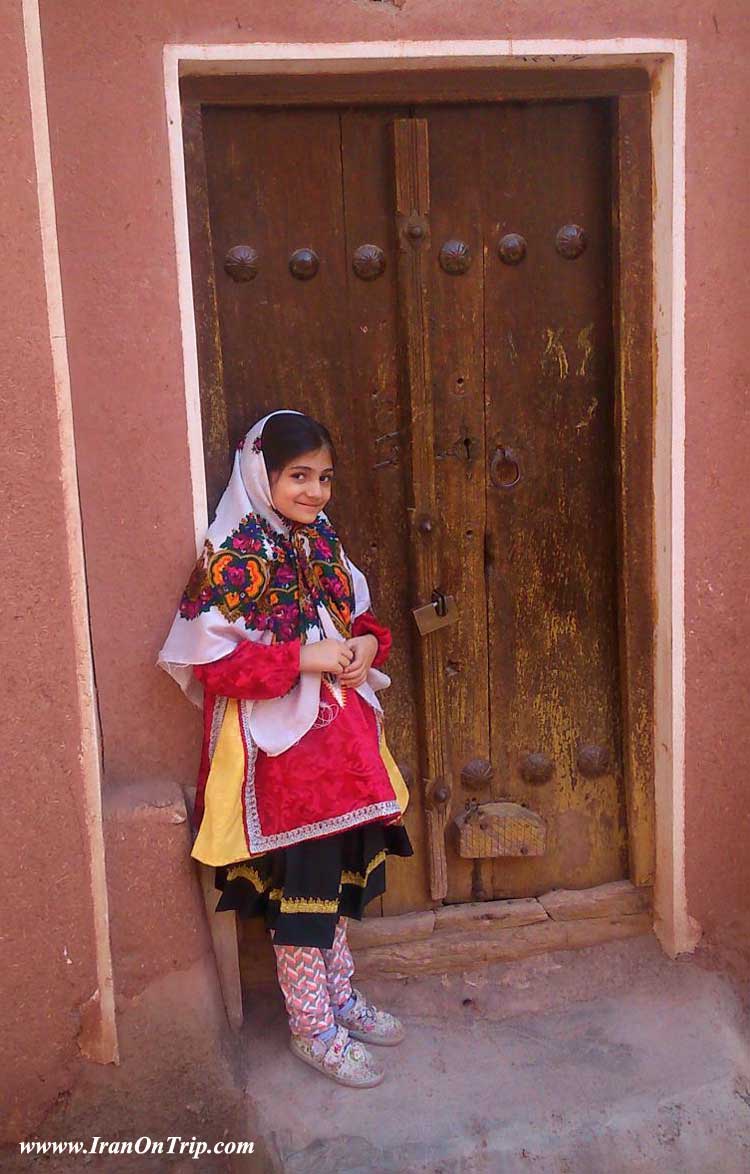 |
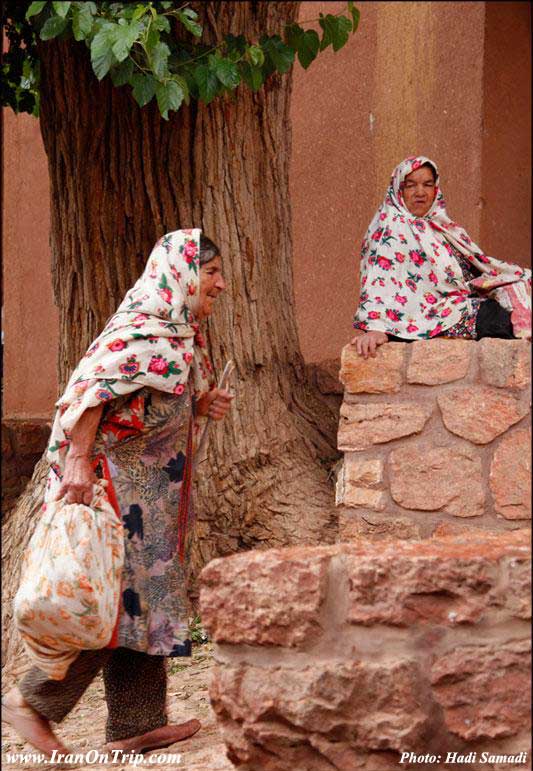 |
An impressive aspect of Abyaneh's architectures is that the houses are uniform in appearance. The doors, most of which have two knockers, are wooden and built in traditional styles. There are beautiful patterns, poems and the names of the owner and mason carved on some doors. These poems afford a good picture of the old Iranian culture. Many facades date back to the Safavid period. Beside the door of many houses there are small platforms providing place for passers-by or local residents to rest for a while.
The simplicity found in Abyaneh's houses affords a picture of life in rural Iran. Each room is used for various purposes. For example, a single room may be used as a dining-room, a sitting-room, a bed-room and a guest-room.
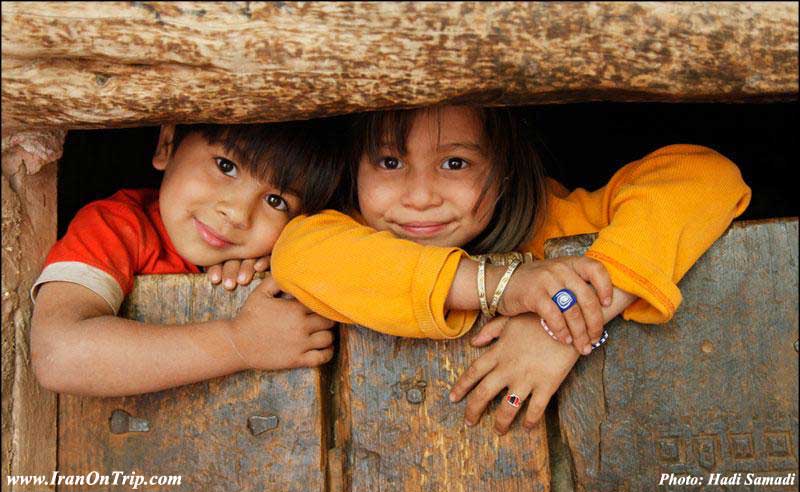
In addition to natural beauties, there are several historical monuments in Abyaneh, of which the following are of more significance. On top of the village sits the ruins of a Sassanid era fort.
The Castle of Haman, two houses of Dervishes dating back to Safavid era, and the remains of two fire-temples dating back to Sassanid epoch (built in an architectural style called Chahar Taqi (four-arch style).
Among the attractions of Abyaneh the Jam'e Mosque, Yarzaleh, Hajatgh Mosque, and Zeyaratgah are notable.
Since June 2005, the village has been undergoing archaeological excavations for the first time ever, as a result of an agreement between Abyaneh Research Center and the Archaeology Research Center of the Iranian Cultural Heritage and Tourism Organization
.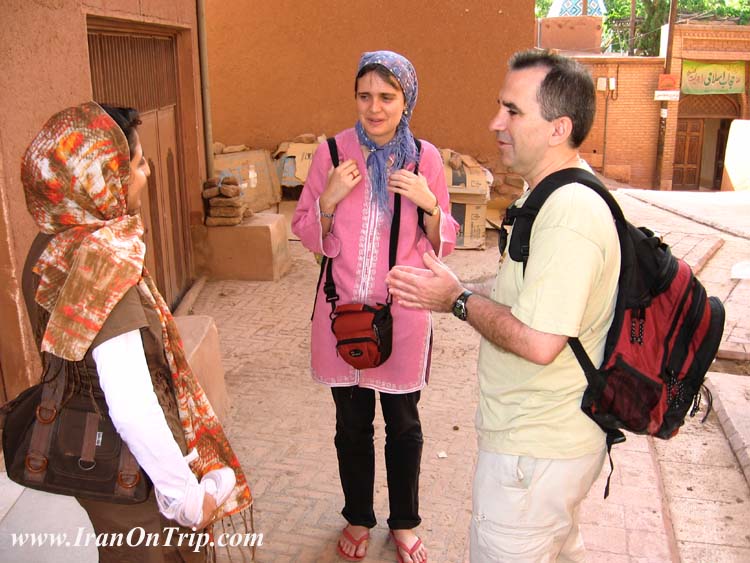
How to go Abyaneh
Drive for about 42 km to Dehji , along the road to Natanz , south of Kashan; a few kin , further on , see a good gravel road to the west , before the Hinjan bridge , where a sign indicates Abyane and the magnificent Barzrud valley. Some 25 km along this road , passing Hinjan village , you reach Abyane at the bottom of a gorge dominated by a small Mongol fort. The main street goes right through the remains of the 'Atashkadeh' or temple , open on three sides and with a broken dome
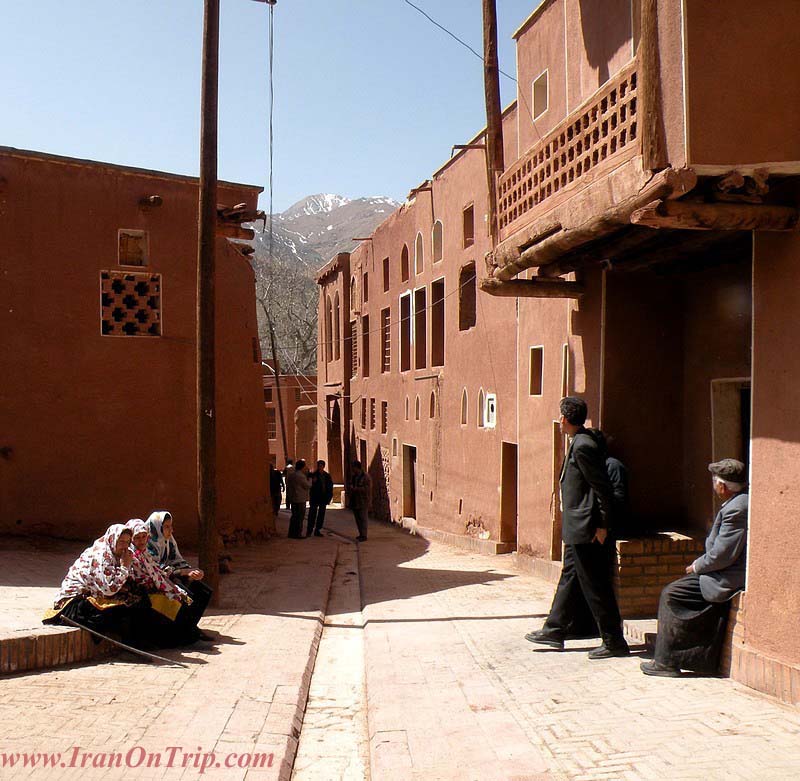
Historical Sites
The Old Houses
There are a good number of old houses in Abyaneh, among them the homes of Gholam Nader Shah and Nayeb Hossein Kashi. In addition to the Zoroastrian fire-temple (from the Sassanian period) in the village, there are three castles, a pilgrimage site, three mosques named Hajatgah, Porzaleh, and Jame, all worth a careful visit. Altogether there are eight mosques in the village.
Porzaleh mosque
built during the Illkhanid reign in the oldest part of the village, has a very vast nocturnal prayer hall. The ornamentations used here look very much like those of the tomb of Bayazid of Bastam, the great Persian mystic
The Jame Mosque of Abyaneh
It dates back to the eleventh century. There are a number of inscriptions and a manbar (pulpit) in the mosque. The interesting thing is that the pulpit has many features similar to the architectural elements and column heads seen in Persepolis
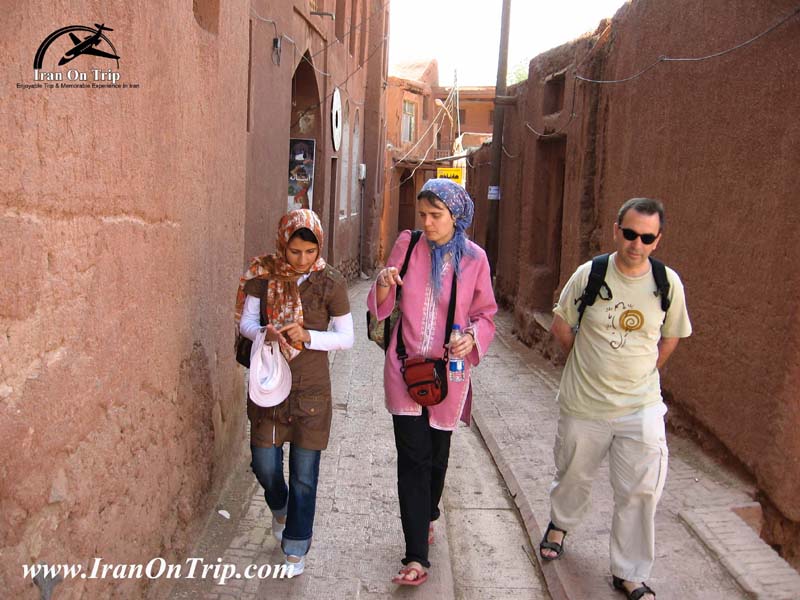
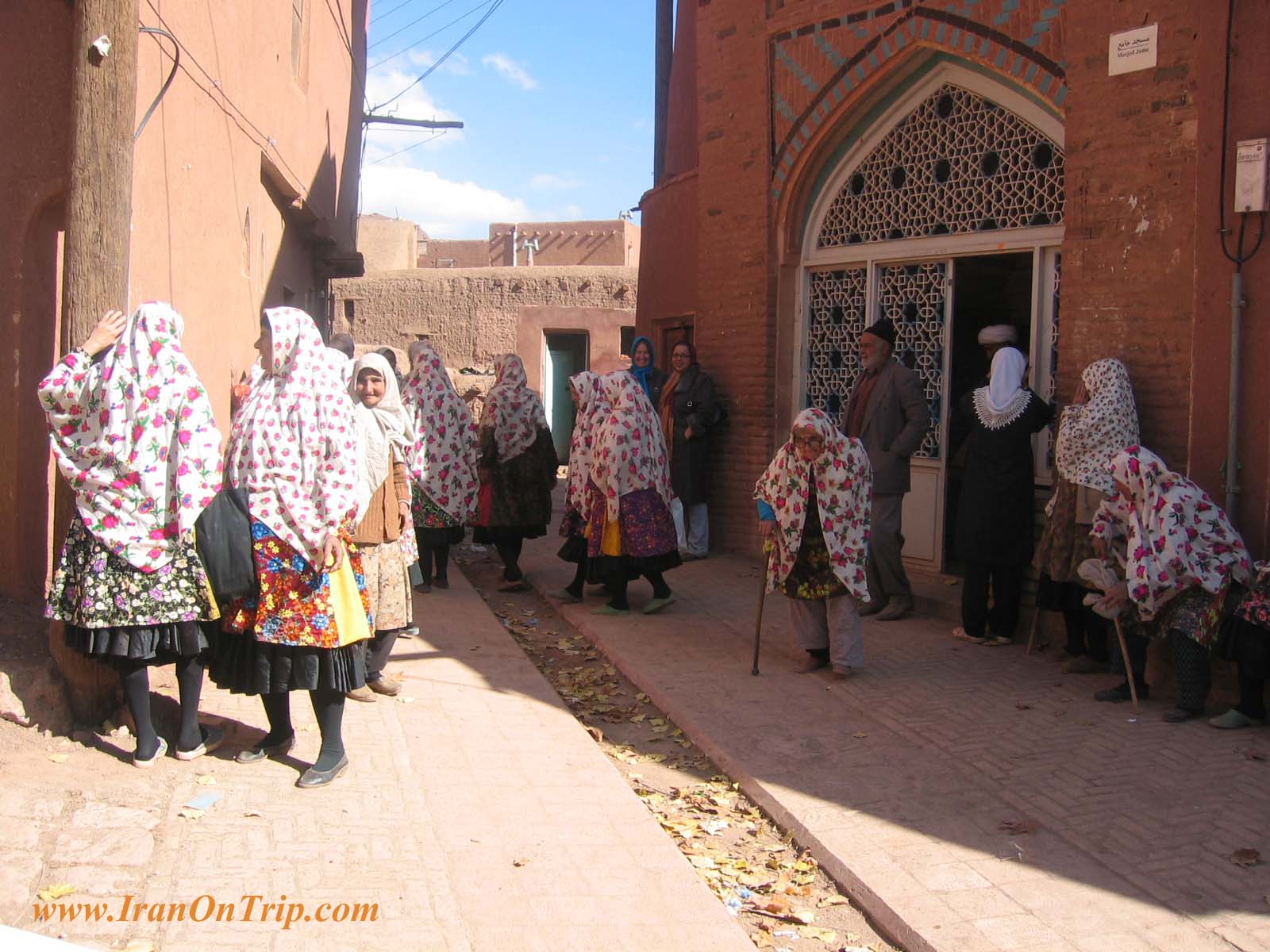
Traditional clothing of abyane women
About 300 m from the Atashkadeh , on the same lane , is an interesting mosque with a probably Safavid entrance and corridor , and next to it , below the present building , another mosque believed to be pre‑Seljuk , with an exceptionally beautiful and unusual carved wooden Mihrab protected by a sheet of glass.
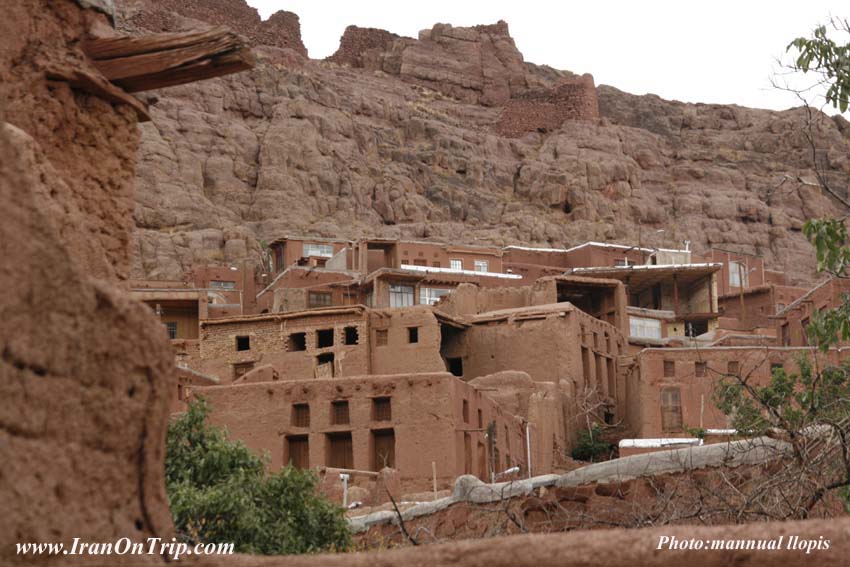

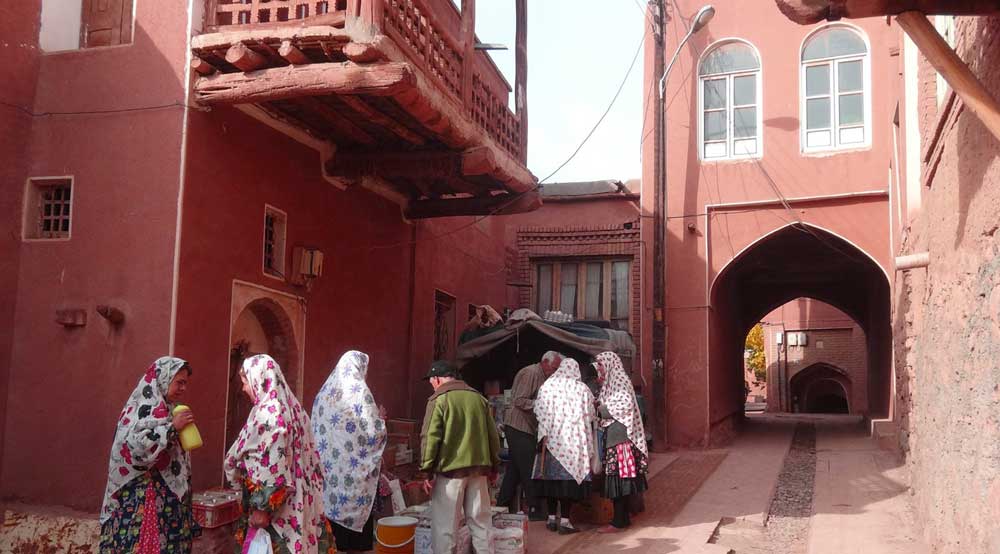
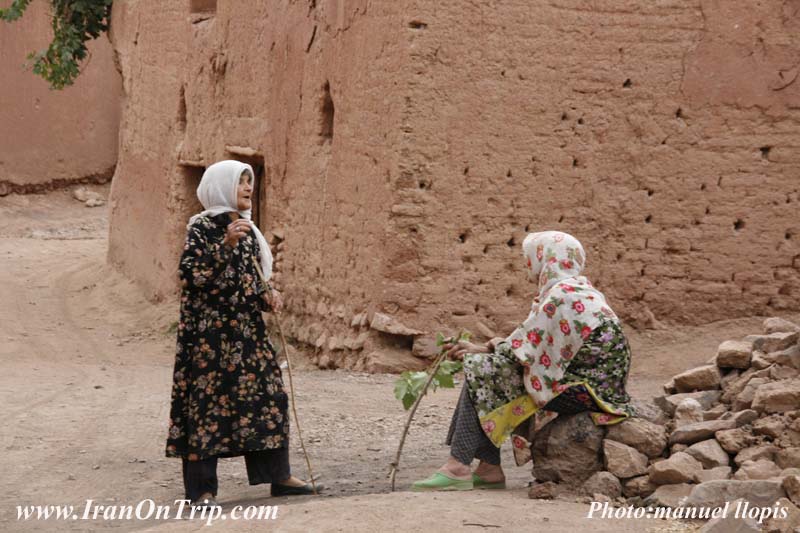
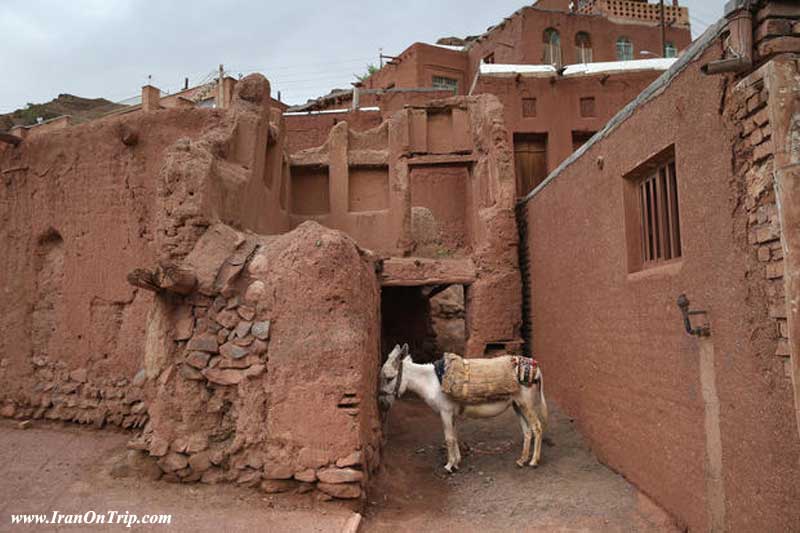


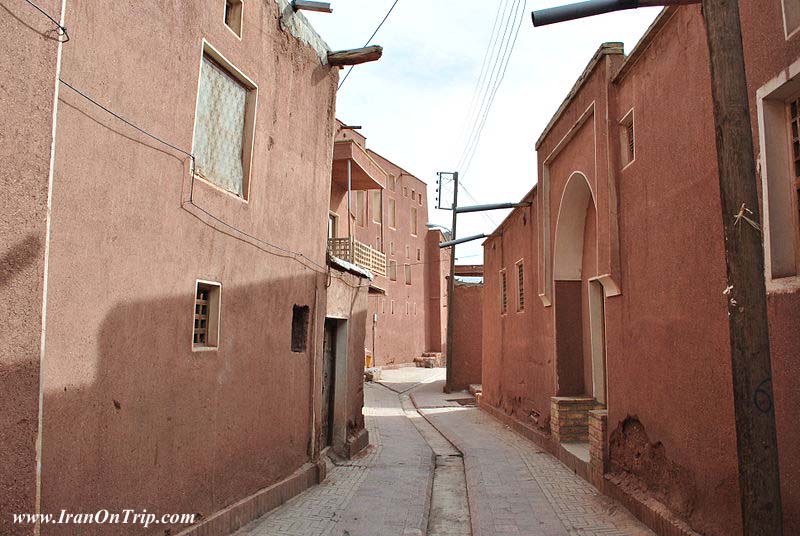
.....
.....
.....

.jpg)



























